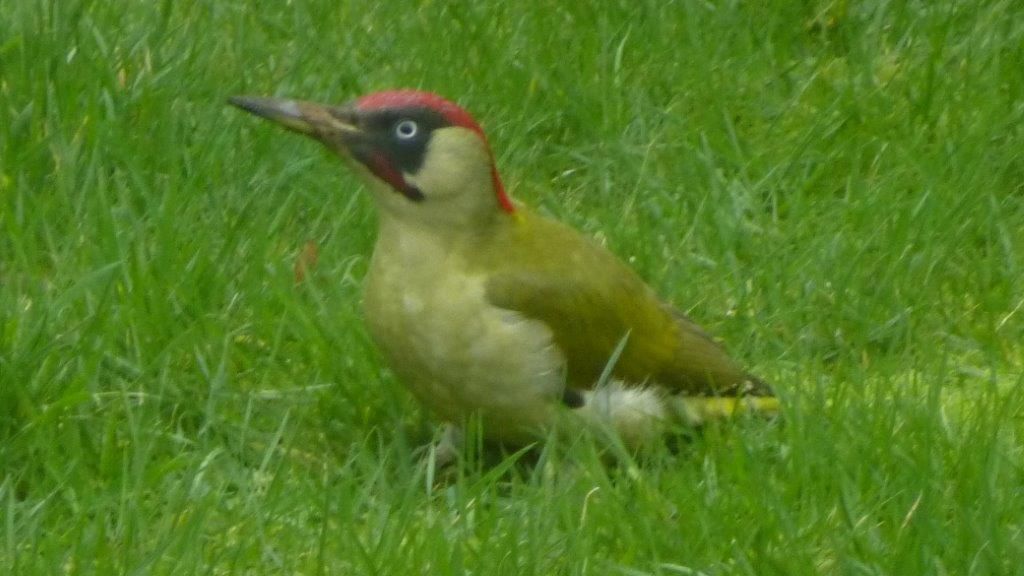Mathew Frith, Director of Conservation at London Wildlife Trust, written while self-isolating.
I was walking through one of my local parks as the call came in from the NHS for me to start 12 weeks’ quarantine. The sight of the acid-green foliage of hornbeam emerging to catch the start of what would become almost five weeks of sunshine, was the most distinctive memory of that visit. It’s a park with grand, gnarled, old oaks, alive with the raucous chorus of parakeets, thick plates of bracket fungi, and the vibrant sulphured froth of what’s known as yellow slime-mould (or dog’s-vomit). This is a typical park of London; lots of space to play, sunbathe and walk the dog, but also surprisingly rich in wildlife; not only in the less tidy corners, but also across much of what is considered people space.
Over 15,000 species of fauna, flora and fungi have been recorded wild in London, and given that about 16% of the capital is parks and other amenity green spaces, we know that parks are a vital resource for the city’s biodiversity.[1] In spring this becomes obvious when the trees blossom and the plants begin to flower, energising a buzz of pollinating activity as bumblebees, and the first butterflies and hoverflies take flight.
Queen bumblebees will have nested by April, finding a burrow in the ground to lay eggs. Over-wintering peacock and red admiral butterflies, resplendent in their jazzy wings will now be joined by brimstone, orange tip, and holly blue, bobbing around shrubs and along flowery borders alighting on primulas, dandelions, comfrey and bluebells vie for attention.
Bee-flies, remarkable two-winged fuzzball mimics of bees, with a long y-pronged proboscis, are on the wing mid-April. They will soon be joined by hoverflies, such as the amazing marmalade fly, that can literally hang in the air turning to catch the scent of flowers on which to feed.
Some of Britain’s largest beetles, stag and cockchafer, will clumsily helicopter into the sky late April to early May, to find a mate and start the next generation, all dependent on the provision of dead wood, a critical resource for a park’s wildlife.
Birds too, are in a frenzy of activity. Nesting will have started back in March and most of our typical parkland birds will now be feeding their chicks. Blue, great, and long-tailed tit and wren, will be scouring early-leafing trees for aphids and spiders, whilst chaffinch, wren, robin, thrush and blackbird will be delving on to shrubland floors and into grassy areas for worms, grubs, and woodlice.[2] Green woodpecker may be seen out on grassy areas in search of ants, but are easily disturbed; one is more likely to catch the sound of a great spotted woodpecker drumming high up in the tree canopies, and before the leaves are out in full they can often be seen spiralling up a bough, eagerly probing for grubs in crevices and cracks.

This busy chorus of hometown birds is joined by those flying in from the south to raise their young. Warblers such as chiffchaff and blackcap are commonly heard as they stake out their territories in woodlands and shrubberies. We’ll also have others stopping off in a park to catch breath before they fly northwards; cuckoo, nightingale and golden oriole have all been reported in the past few weeks.
The key to making a park great for wildlife is quite simple, but the first efforts to make changes some 35 years ago often confined these to ‘nature areas’.[3] In short, a diversity of structure and vegetation is imperative; short grass, long grass, shrubs, tall plants, and trees, along with other features which help wildlife fulfil its lifecycles, such as a good proportion of locally native plants, ponds and pools, logs, bare soils, shaded areas, and open sunny areas. The avoidance of pesticides and keeping dogs under control during spring also helps.
We have come on leaps and bounds over the past 20 years as the importance of our access to nature is increasingly recognised. Most parks in London now exhibit specific interventions to encourage biodiversity, and this is a popular incentive for people to enjoy them. I alas, am confined to my home for now, but I can’t wait to step into my cluster of local parks later in the summer to see the brightwinged butterflies and watch the parakeets spitfire around the trees.
[1] Source: Greenspace information for Greater London. About 47% of London is green and blue space; the figure for parks and amenity greenspaces excludes natural spaces, private gardens, cemeteries, allotments etc., although all will share a degree of the same features that can benefit wildlife.
[2] A survey of 310 inner London’s squares in 2004 recorded 31 species of bird, this number increases the further towards thr rural fringes of the city.
[3] London Wildlife Trust published Encouraging wildlife in Urban Parks in 1986.



